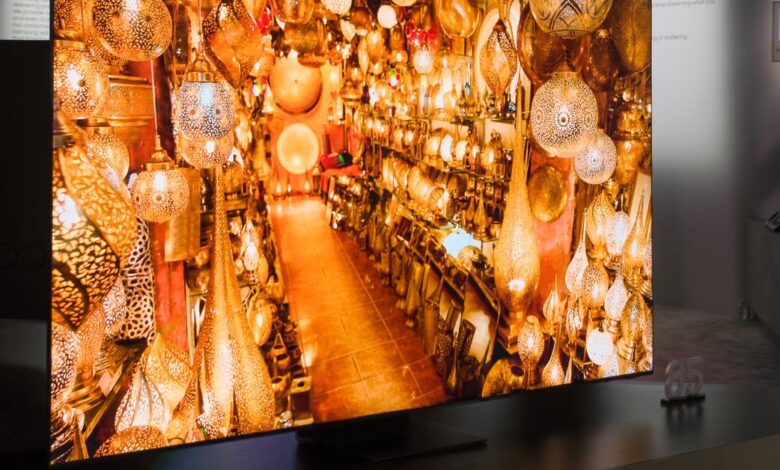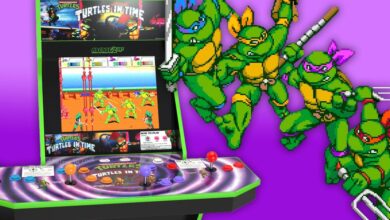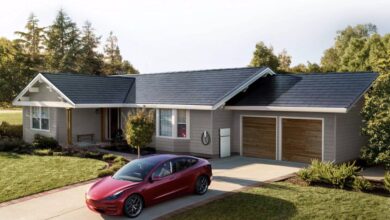What CES 2023 taught us about the year ahead in TVs

[ad_1]
Another CES has come and gone. And after spending a few days reflecting on what I saw at the big trade show, it’s clear that 2023 will be a relatively quiet year for TVs on the whole. There were no major breakthroughs or new standards demonstrated at the show — at least none that will make it into your living room this year.
Instead, we saw a lot of iterative, predictable evolution of current home theater tech. TCL and Hisense offered up Mini LED TVs with more dimming zones than we’ve ever seen. Samsung and LG are producing the most impressive OLED TVs yet. And nearly TV maker is talking up AI and deep learning gimmicks that cover everything from adding more depth to an image to rethinking the concept of picture modes.
Let’s cover some trends that were evident in Las Vegas last week.
We’ve made it through the HDMI 2.1 rough patch
A couple years ago, TV manufacturers were still working out the kinks with HDMI 2.1 features like 4K 120Hz gaming, variable refresh rate, auto low latency mode, and so on. Not all TVs supported everything, and even when they did, that might have only been true of a single HDMI port or two.
Fast forward to today, and the situation has gotten much better for TV shoppers. If you’re spending more than $700 or $800 on a set right now, the odds are good that it will have most of the bells and whistles that you’re looking for. 4K120 is everywhere, and we’ve seen recent models from Samsung, TCL, and others push VRR up to 144Hz and beyond.
There are still occasional gotchas to be aware of: some Hisense and TCL TVs can halve the vertical resolution of 4K in gaming mode, and this isn’t always obvious or explained to customers as clearly as it should be. But on the whole, the industry has made a lot of progress and gotten over the hump of early HDMI 2.1 frustrations. If you’re buying a TV in 2023, you should be in for a good experience.
Let the brightness wars begin
OLED TVs are starting to close the brightness gap with high-end Mini LED LCD TVs. At CES, both Samsung and LG announced their brightest OLED sets yet. Samsung Display’s rapid advancement of QD-OLED is particularly impressive: the second-generation panel can now reach up to 2,000 nits of peak brightness. That’s right up there with the very best LCD TVs. And that display will be in Samsung QD-OLED TVs hitting the market this year. Plus, you get the superior, even more luscious color reproduction that we first saw from QD-OLED last year.
LG says its new G3 OLED is 70 percent brighter than “conventional” OLED TVs of the past. I expect there will still be scenarios where Mini LED proves brighter and wins out in sunny rooms, but choosing the perfect blacks and fantastic viewing angles of OLED once meant settling for just-okay brightness. And that’s no longer the case if you’re willing to shell out for a brand-new, high-end model.
Roku making its own TVs could have a ripple effect
Roku will begin selling its own lineup of TVs later this year. Set to be available in a broad range of screen sizes at very aggressive price points, the move is guaranteed to deepen Roku’s presence in living rooms across the US.
But it’ll be fascinating to see how companies like Hisense and TCL react to Roku competing with them more directly in the hardware space. For years, they’ve partnered with the streaming device maker on the Roku TV program, building Roku’s easy-to-use software into many of their TV models.
Will the debut of first-party Roku TVs push those OEMs to align closer (or exclusively) with Google TV in the months ahead? Amazon and now Roku are selling their own TVs, but I can’t imagine Google has interest in going that route anytime soon. Or will these companies continue releasing Roku TV sets that could potentially outshine Roku’s own when it comes to picture quality and overall value? The simplistic OS has helped build their brand power, after all.
8K has totally stalled, and some TV makers are bailing
Alongside the 4K models that nearly all consumers will buy, Samsung and LG both announced their latest 8K TVs at CES 2023. They didn’t have much to say about the 8K content problem; even after years of 8K being a fixture at the show, there’s very little entertainment available to watch at such a detailed resolution. And the problem is unlikely to be solved anytime soon.
Instead, both companies talked up their improved upscaling and AI-powered picture processing enhancements. Getting 4K shows and movies to look more 8K-ish seems to be the best option for the foreseeable future — if people can even tell the difference.
But for some TV makers, 8K might be losing its sheen. TCL introduced a new TV lineup in Las Vegas, but it doesn’t include a single 8K model. The QM8 flagship will be available in an enormous 98-inch size, but it’ll stick to 4K resolution. It’s those huge TVs where the 8K difference is most apparent, and if manufacturers don’t think it’s worth the effort anymore, that should clue you in on how stalled 8K has become. With turbulent economic conditions ahead and the continued dearth of worthwhile content, I’d expect a very quiet year on the 8K front.
Samsung really caught onto something with The Frame
Across the show floor, there were several TVs clearly inspired by Samsung’s The Frame. It turns out a lot of people love when a TV can seamlessly blend into their home decor — or at least do a better job than what we’ve had for decades. Now suddenly, everyone is making TVs with faux wood bezels and plenty of artwork to show off when you’re not watching anything. After giving The Frame a matte display last year, Samsung was a little less ambitious in 2023; this time, the upgrades are mostly new bezel options.
A wireless future awaits in the (far-off) distance
Aside from all the brighter-than-ever TV screens that made an appearance at CES, the most exciting concept might have been LG’s Signature OLED M. The 97-inch OLED TV uses proprietary wireless tech to receive all of its audio and video data wirelessly from a small black box that can be placed up to 30 feet away. LG says the system can transmit 4K video at up to 120Hz, though questions remain about what kind of latency customers will encounter. We’ll need to see some significant strides in wireless networking and home theater standards before we need to stop worrying about concealing HDMI cables, but if the OLED M can deliver on its promise — even get most of the way there — it’ll be a promising step toward that wireless future.
Photography by Chris Welch / The Verge
[ad_2]
Source link






